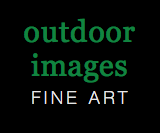
Middle Gray? 18% Gray? 13% Gray? 12.5% Gray? What do we mean when we say middle gray? Middle Gray is this elusive concept that produces a tone exactly halfway between black and white. The question is why do we see so many references to different percentages of gray? Why isn’t gray just plain ole’ gray?
Rather than try and produce the exact physics behind the measurements, I have decided to talk in general terms about grey and then reference the plethora of information already on the web about the physics and history. I am going to use middle gray instead of trying to reference 18%, 13% or 12.5% or whatever other percentages different people report. This will hopefully simplify our discussion.
The Purpose of Middle Gray
The purpose of middle gray is to give us a standard tone that is in between all highlights and all shadows. Light is measured in lumens, hence the word luminance to talk about the relative brightness of light. Most light meters measure the luminance of reflected light or light that has come from the source and bounced off of something.
The luminance of reflected light is far different than the luminance of the source of the light. For example, you cannot look directly at the sun, the source of daylight. However, you can look at the sky, the ground, trees, etc. You also know that more or less light is reflected. If you look at a winshield and move to get the correct angle, the sunlight can be blinding. That means the winshield is reflecting near 100% of the source of the light.
Measuring the luminance of reflected light is important because film or your digital sensor receives reflected light from your subject in order to take a picture. In a previous article we talked about the ease of obtaining an exposure using incident light instead of reflected light. However, our goal is really to obtain the correct exposure. The correct exposure to record a given subject is one that would render the tone of middle gray exactly as middle gray. [NOTE: please forgive the use of the term ‘correct exposure’. From an artistic viewpoint the correct exposure may be one that darkens or lightens the subject compared to what we see. I am using this term scientifically for now, not artistically.]
Using reflected light of a typical subject would produce an exposure value that would produce that subject as a middle tone. More often than not, the subject is not an exact middle tone. Recall that the incident light reading gives an exposure value that should produce the scene in the same tones you see it – darker in the shade and lighter in direct light. Thus, the incident reading takes into account the luminance of the source of the light and converts it to an exposure value for that elusive middle gray tone.
So What?
Ok, so what? Remember that most light meters measure reflective light. This means to obtain an exposure value we need to measure the reflected light from a middle gray source. Also remember that it can be difficult to determine exactly what source in the subject is supposed to be that middle gray tone. Enter a gray card.
Holding a gray card in front of a subject and measuring the light reflected from the source to the camera gives an exposure value that will render the gray card with the middle gray tone. This gives us the key point of middle gray and the problem with what percentage of gray is the gray card.
Key point: If the meter should produce an exposure value based to produce the middle gray tone on a given film and the exposure value is taken from the luminance of reflected light from a gray card, THEN the gray card, the meter and the film need to be coordinated to the exact same middle gray.
Herein lies the problem. There is no standard that crosses the boundary of producing gray cards, manufacturing calibrated light meters and the responsiveness of silver compounds in film or digital sensors in a computer chip. There are standards for producing each item, but they are not in tandem.
The Solution
The solution is simply said but takes some effort to perfect. The solution is to perform the calibration of your gray card, with your meter in conjunction with each film you use. To be entirely complete, you would also want to calibrate your development process with each film. I will address the methods to calibrate these items in later posts and then link them here.